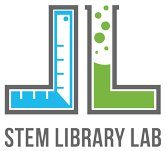by Callie Oliver | Jan 4, 2019
(MS.ESS1B.c) The solar system appears to have formed from a disk of dust and gas, drawn together by gravity.
by Callie Oliver | Jan 4, 2019
(MS.ESS1B.a) The solar system consists of the sun and a collection of objects, including planets, their natural satellite(s) (moons), and asteroids that are held in orbit around the sun by its gravitational pull on them.
by Callie Oliver | Jan 4, 2019
(MS.ESS1A.b) Earth and its solar system are part of the Milky Way galaxy, which is one of many galaxies in the universe.
by Callie Oliver | Jan 4, 2019
(MS.ESS1B.b) This model of the solar system can explain eclipses of the Sun and the Moon. Earth’s spin axis is fixed in direction over the short term but tilted relative to its orbit around the Sun. The seasons are a result of that tilt and are caused by the...
by Callie Oliver | Jan 4, 2019
(MS.ESS1A.a) Patterns of the apparent motion of the sun, the moon, and stars in the sky can be observed, described, predicted, and explained with models.

